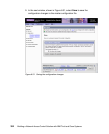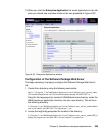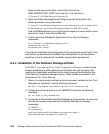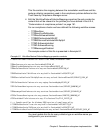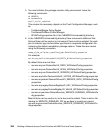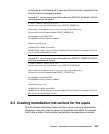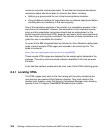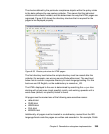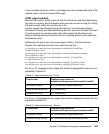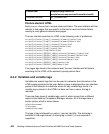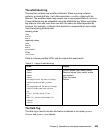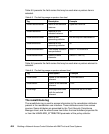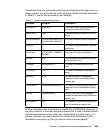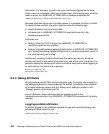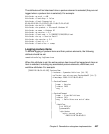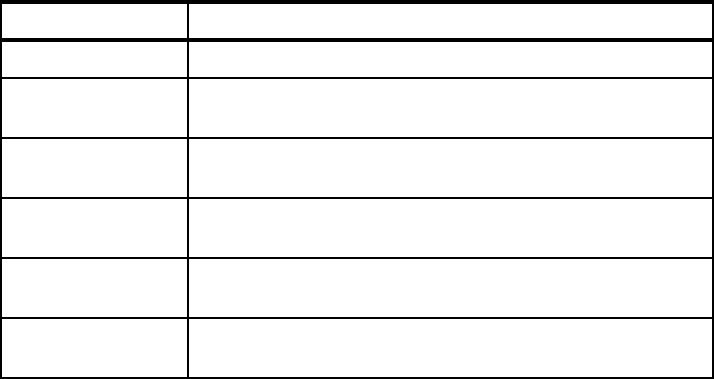
400 Building a Network Access Control Solution with IBM Tivoli and Cisco Systems
pages would be in a subdirectory named pl_PL. The default language and local
is
en_US.
This document will use the variables listed in Table 8-1 to describe the dynamic
parts of the paths to HTML pages.
Table 8-1 Variables definition
Base HTML
The least specific set of HTML pages is the base HTML pages. These are the
pages that are used to display the main welcoming page when the remediation
handler user interface is refreshed or loaded, and the page displayed when no
specific information is available for a selected item or element.
When the base HTML page is requested, the user interface will search in the
following order:
scripts/nac.win.any.posture.PostureCollector/{lang}/default.html
scripts/nac.win.any.posture.PostureCollector/{DEFAULT_LANG}/default.html
If no match is found, a blank page will be displayed.
Posture item HTML
Each instance of posture collector generates exactly one posture item. The user
interface searches for HTML in the following order of preference:
scripts/{collector}/{lang}/{instance}/default.html
scripts/{collector}/{lang}/default.html
scripts/{collector}/{DEFAULT_LANG}/{instance}/default.html
scripts/{collector}/{DEFAULT_LANG}/default.html
Variable Definition
{DEFAULT_LANG} Hard-coded to en_US.
{lang} Preferred ISO language/locale code as detected by Java, for
examples, pl_PL or en_AU.
{collector} Name of the collector class that generated the element or item,
for example, nac.win.any.netaccounts.PostureNetAccountsV2.
{instance} Name of the instance that generated the element or item, for
example, Windows Hotfixes.
{element} Name of the posture element, for examples, KB665375 or
Service Running.
{status} Status of the posture element.
Will be from the set: {PASS, WARN, FAIL, ERROR}.



